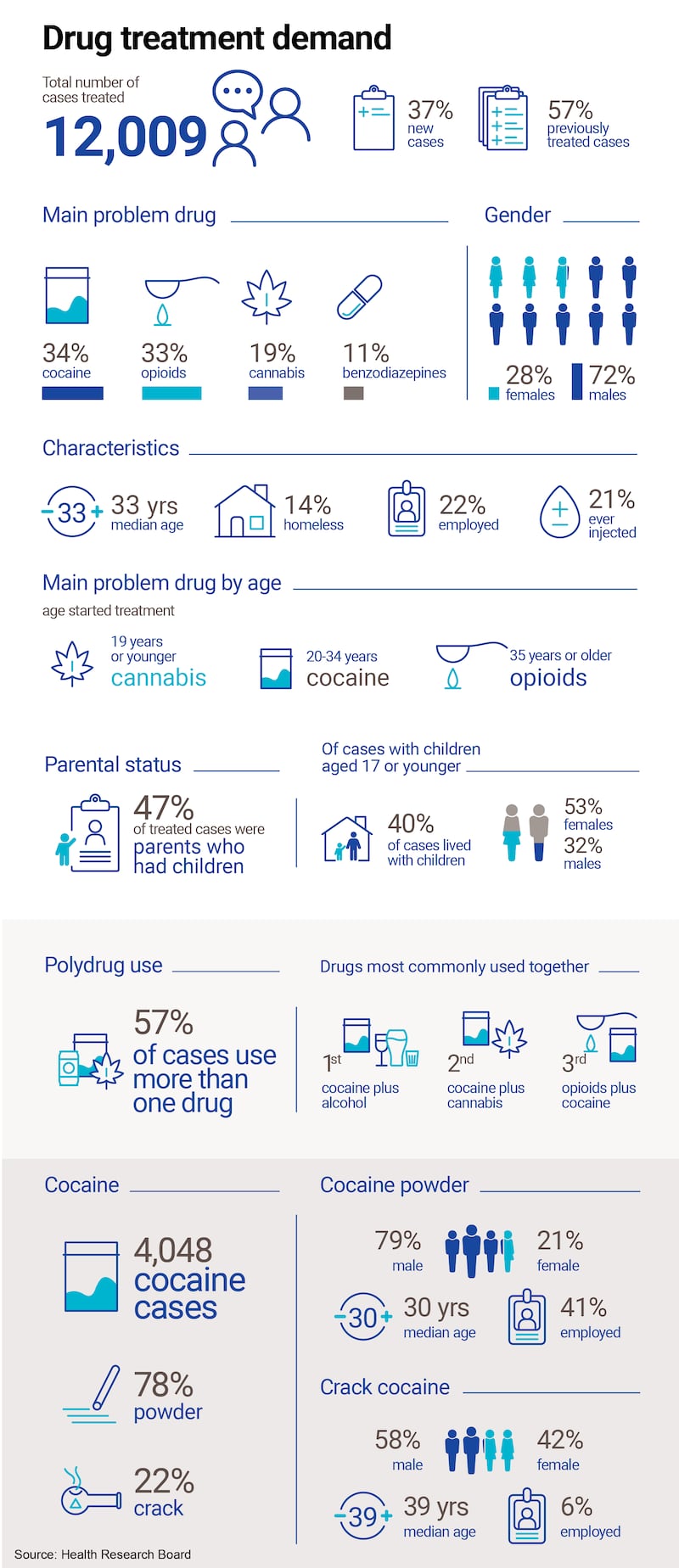Cocaine has overtaken heroin and other opioids to become the most common problem drug, according to the Health Research Board (HRB). Last year cocaine accounted for one in three of the 12,009 cases treated for problem drug use, a HRB report into drug treatment shows, ahead of opioids, cannabis and benzodiazepines.
The trend is driven by wider use of the drug and greater provision of treatment services, experts say.
Cocaine is the main driver of demand for treatment among 20- to 34-year-olds, according to the report; cannabis features most strongly among those aged 19 and under, and opioids among the over-35s.
Since 2016 there has been a 259 per cent rise in the number of cases where cocaine was the main problem drug.
READ MORE
“There has been a considerable rise in the number seeking treatment for cocaine-use in recent years,” said Dr Anne Marie Carew, research officer at the HRB. “This is the result of the rise in use of cocaine as well as an increase in the provision of specific services to treat cocaine-use.”
In 2022, powder cocaine accounted for almost eight in every 10 treated cocaine cases, while two in 10 were crack cocaine. Four in 10 powder cocaine cases were employed and eight in 10 were male.
Where crack cocaine was the main problem drug less than one in 10 were employed and six in 10 were male. Dublin, Kildare, Meath and Limerick accounted for most of these cases.
Overall the median age of cases presenting for drug treatment with the HRB was 33. Men accounted for 72 per cent of cases, and 14 per cent were classed as homeless. Some 22 per cent were in paid employment and 40 per cent were living with children. The proportion of cases who were employed has doubled over the past seven years.
A majority of cases (57 per cent) involved polydrug use, with cannabis, alcohol and cocaine as the most common additional drugs.
“Our latest data provides insights into the patterns observed in drug treatment,” said HRB chief executive Mairéad O’Driscoll. “Like, last year we are seeing an increase in cocaine as a problem drug. This year it has surpassed opioids. The data we have collated will support practices in relation to treatment as well as underpinning action on preventive measures.”











